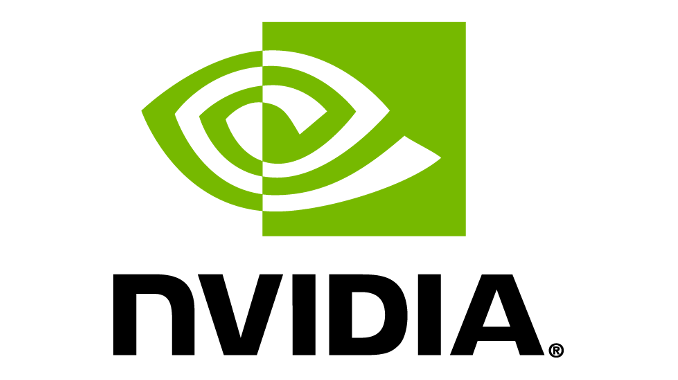NVIDIA Publishes Official G-Sync HDR System Requirements, Releases VBIOS Updater for DisplayPort 1.3 & 1.4
by Nate Oh on June 8, 2018 7:00 PM EST- Posted in
- GPUs
- GeForce
- NVIDIA
- G-Sync HDR

As the first week of June winds down, the long-awaited and even longer delayed G-Sync HDR monitors are just about here. For Acer's Predator X27, units are starting to finally make their way into the hands of consumers, while ASUS' ROG Swift PG27UQ is slated for late this month.
In preparation for these new displays, towards the end of this week NVIDIA quietly published official G-Sync HDR System Requirements, which links to the newly-released Graphics Firmware Update Tool for DisplayPort 1.3 and 1.4 Displays. The latter applies to a range of Maxwell and desktop Pascal products, but more importantly is there to provide G-Sync HDR capability for older Pascal cards that shipped without an HDR-supporting VBIOS.
The G-Sync HDR system requirements themselves are described rather minimally:
- Windows 10
- NVIDIA GeForce GTX 1050 or higher (desktop GPUs may need firmware upgrade)
- R396 GA2 driver or higher (presumably 397.64 and higher)
- DisplayPort 1.4 driven directly by the GPU
None of these prerequisites are particularly surprising, but it does formally confirm the requirements that so far only manufacturers have detailed. A Windows 10 version was not specified, but presumably refers to the latest April 2018 Update, while the "GTX 1050" presumably includes the new GTX 1050 3GB with 96-bit memory bus.
As for the VBIOS update tool (32-bit and 64-bit), it will detect whether a VBIOS update is needed or not before prompting the user to flash to the latest firmware. Beyond compatibility with G-Sync HDR, the new VBIOS will resolve hanging on boot or blank screening until the OS loads, on systems connected to DP 1.3 or 1.4 monitors. The release notes also mention supporting the latest DP1.3 and 1.4 features, though specifics were not provided. To be clear, it is not intended for user customized VBIOS, and as far as Pascal goes the tool appears geared towards early Founders Edition models.
Off the back of their 398.11 WHQL driver optimizations for HDR G-Sync, NVIDIA has also released a 398.18 hotfix, resolving black screening when booting to Windows after installing 397.93. And the support instructions for sending logs of display issues (DispDiag) has also been updated.
Related Reading
- ASUS’ ROG Swift PG27UQ G-Sync HDR Display Due in Late June For $1999
- Acer’s Predator X27 G-Sync HDR Display Listed in the USA, to Ship on June 1
- NVIDIA Updates on G-Sync HDR: 4Kp144 Monitors On Sale at End of May, Other Models Coming Later This Year
- Acer and ASUS G-Sync HDR Displays Listed & Priced In Europe
- NVIDIA Expects 4K 144 Hz G-Sync HDR Displays to Launch in April
- Acer and ASUS Delay Their 4K 144 Hz G-Sync HDR Displays to 2018
- ASUS Demonstrates ROG Swift PG27UQ: 4K, 144 Hz, HDR, DCI-P3 and G-Sync
- Acer Announces Predator X27 Monitor: 4K@144 Hz with DCI-P3, HDR10, & G-Sync
Source: NVIDIA











17 Comments
View All Comments
psychobriggsy - Monday, June 11, 2018 - link
Freesync is an implementation of an open standard that doesn't add $200 onto the price of a mid-range monitor. Nvidia could support this tomorrow if they weren't out to stiff their customers twice over for the GSync tax.The fact that GSync is now only just getting HDR shows the issues with proprietary technologies.
piroroadkill - Tuesday, June 12, 2018 - link
I have the same opinion. I have a 1080 Ti, but I think it's absolutely stupid NVIDIA doesn't support Freesync. I have no interest in buying a G-Sync monitor, because then I've a) spent a bunch of money to line NVIDIA's pockets and b) locked myself in to NVIDIA cards for the life of the monitor. No thanks.brookheather - Sunday, June 10, 2018 - link
My Palit JetStream GTX1060 3GB with the updated vBIOS still has a blank screen until Windows 10 starts with UEFI boot - it's fine with legacy boot though I can't then use Secure Boot. I have a Dell P2715Q 4K monitor connected with DisplayPort.xchaotic - Tuesday, June 12, 2018 - link
The most dissapointing bit is there seems to be nothing between 27" and 65" supporting G-Sync + HDR.I already have a 27" 144hz monitor and I don't see the point of 4k at such size.
I'd much rather have a 43" or so monitor with 4k, g-sync, hdr, 144hz than a 65" one - those BFG TV are just too large for desktop use IMO...
haukionkannel - Tuesday, June 12, 2018 - link
Yep 36”-42” would be good for 4K at this moment. Hopefully in future 10” is good for 4k and 24” for 8K...